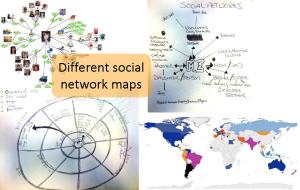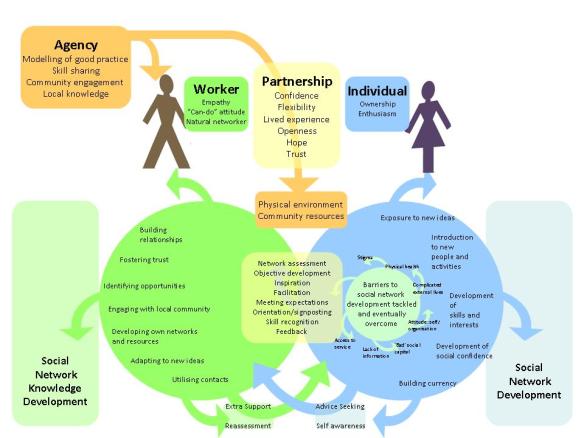The Connecting People Study team have now trained 6 agencies on how to use the intervention in their daily practice. Workers from all levels of seniority attended from the agencies, which allowed the intervention to be understood from both a practical and a more logistical perspective. We hope that this will aid the dissemination of the intervention and training of other workers within the agencies as time goes on.
The agencies involved so far have been BlueSCI, Start Again Project, Grapevine, Waltham Forest 247 Markham Road, Waltham Forest CDS, and Wandsworth SCART. Each training lasted for either 2 or 3 days, and shared a similar ‘core’ first day, during which the intervention model was described and explained fully and each agency’s existing practice was aligned with the principles of the intervention. Activities also included a social network mapping exercise and some discussions on boundaries and barriers. These activities were picked to give a good base of knowledge surrounding the intervention, as well as challenging workers to perhaps look at their practice from a new, and more personal perspective. The ethos of the training and collectively determined guidelines ensured that trainers and workers from all levels of seniority were placed at the same level, allowing more useful communication to be achieved.
One major objective of the first day of training was to establish exactly what the agencies would need to cover over the rest of the sessions. As the intervention is based on examples of existing good practice, all of the agencies were already strong in several aspects of the model. This meant that we could really establish where the areas of need were and focus on training these. It also meant that each agency (or group of agencies where more than one organisation trained together) received bespoke training that was tailored to their own wishes and needs. Some agencies wanted help with the earlier stages of the intervention – for example building the relationships and trust with an individual, or seeing the assets within the community. However, we found that most training need centred around the later stages of the intervention. Agencies often felt that it would be hard to move people onto other activities outside of their service, and there were some concerns about stopping a relationship. To tackle this we focussed significant amounts of training – where needed – on helping workers with these processes. We talked about barriers to individuals moving on from an agency, for example complex external lives, and how to deal with this.
We asked those attending training to fill in feedback forms at the end of the first day, and at the end of all of the training. This included ratings on how confident individuals felt about each aspect of the intervention model. We used the first day forms alongside the feedback from the groups to guide the development of the subsequent training days. We have also been looking at the ratings before and after the subsequent training, and have found that for the most part figures have increased for each agency, especially within the areas with lower confidence ratings that the training focussed on.
Although we spent a lot of time working with agencies as individual entities to ensure that the intervention works for them in the future, there was a lot of knowledge sharing between agencies when more than one were being trained together. On two occasions, we trained agencies working with individuals with mental health problems alongside agencies working with individuals with learning disabilities. These groups have commonalities in their needs that allowed for useful discussions to be held. However, the differences between the groups meant that one agency were often able to problem solve for the other. All agencies that trained with other organisations commented on how useful it was to have this differing point of view and learn from a completely different way of working.
We now have a short break from the training before it picks up in earnest again in September, where we will be training agencies nearly every day. This will give us time to review the training exercises and refine them accordingly. In the meantime, if you would like to have a go at one of the training exercises then try the below, where we are asking you to map and consider your social network. Please give us any feedback that you have on this – hannah.reidy@kcl.ac.uk – we would love to hear from you!
Social network mapping exercise :
Draw a map of your social network, including factors (people) that protect your wellbeing. This can be constructed in any way that you see fit, use your imagination, or have a look at the examples in the picture below.
- Find a partner and get them to draw their social network too
- Take it in turns to describe your network to your partner
- Suggest another area that your partner could add to their network
- Discuss whether there are negative influences within your social network and why
- Talk about the direction of your network connections – what do these connections give to you?
- What do you give to these connections (what are the assets that you give to your network)?
Questions to consider: look at your networks now through the lens of ‘the worker’.
- How many of these individuals are still within your network whilst you are at work – your professional network?
- How many of them disappear?
- How many would you be willing to use to help an individual who you are working with?
- Consider why you have responded in the way that you have to these questions


